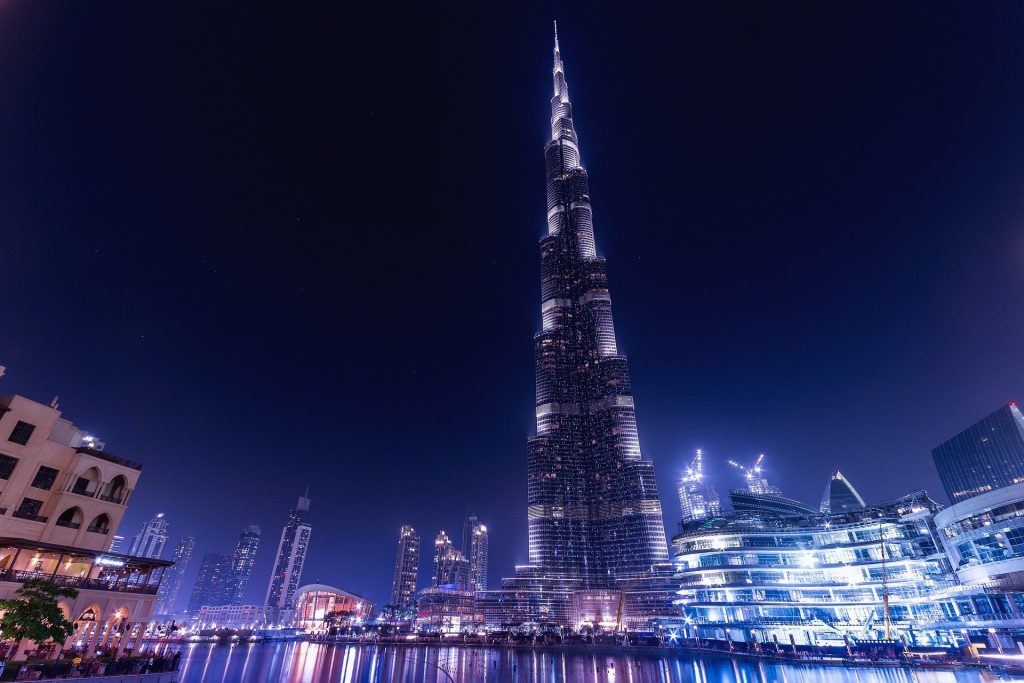
The United Arab Emirates’ territory and emirate of Dubai are well known for its upscale shopping, cutting-edge buildings, and exciting nightlife. Holding the title of the world’s tallest structure since 2010, Burj Khalifa height is 828 meters and is one of the first places to visit in Dubai. For such a strikingly modern construction, it may come as a surprise to learn that Burj Khalifa’s architecture is deeply rooted in the culture of Dubai and the surrounding area. In addition to adorning the city’s skies, it is a magnificent architectural and technical feat that has expanded the possibilities for skyscraper development.
Some of The Facts about Burj Khalifa
- Rooms, Levels, and More
- Origin and Ownership
- Artful Architecture and Design
- Sustainability in engineering
- Where is Burj Khalifa
- Other Attractions in Burj Khalifa
- Burj Khalifa Price
- Room and Real Estate Prices
1. Rooms, Levels, and More
There are 163 levels in the Burj Khalifa. It has more stories than any other skyscraper in the world and rises more than 828 meters. Naturally, the Burj Khalifa also boasts one of the tallest elevators in the whole world. Eight escalators and 57 elevators with a top speed of 10 meters per second are available in the building.
The Armani Hotel & Residences, which extends to level 39 at the Burj Khalifa’s base, is followed by residences on floors 19–108. On the 122nd level, above the housing units, is a stunning eatery named At.Mosphere. Corporate offices and suites are located on levels 112-154. The world’s highest outdoor observatory, At the Top Burj Khalifa Sky, is located on level 148. The world’s tallest lounge, at 585 meters, is located between levels 152 and 154.
There is way more to the Burj Khalifa than just views and food. Along with the first Armani hotel in the world, the structure also contains art and culture. The building is filled with works of art that were specially commissioned, which will satisfy art aficionados. Two examples include the installation “World Voices” in the resident’s lobby and the sculpture by Egyptian-born artist Karim Rashid, which is composed of moving oval forms and is located at the corporate entrance. The latter piece, created by Catalan artist Jaume Plensa, has hanging cymbals that make noise when water drops strike them.
2. Origin and Ownership
Burj Khalifa owner and primary builder, and one of the biggest real estate firms in the world are, Emaar Properties PJSC. Before the inside of the skyscraper had been finished, excavation work for the foundations started in January 2004. On January 4, 2010, the tower was formally opened.
Adam Smith, a well-known architect whose impressive resume includes the Willis Tower and Hyder Consulting, constructed the Burj Khalifa. Although there were a few roadblocks along the way, the masterpiece has now been transformed into an incredible skyscraper built using Islamic design that highlights both Dubai City Sky and the famous Burj Al Arab. Reinforced concrete and structural steel make up the main construction. The building also has a cladding system that is made to endure Dubai’s sweltering summertime temperatures.
An interesting fact about the Burj Khalifa is, that it was once known as Khalifa Tower or Burj Dubai, until being renamed in honor of Abu Dhabi and Khalifa bin Zayed Al Nahyan, the president of the United Arab Emirates.
3. Artful Architecture and Design
The interlocking circles that extend out from the tower’s footprint are a design motif that was influenced by Islamic geometric traditions, while the tower’s tier-by-tier spiral shape is reminiscent of conventional Middle Eastern architecture. This also applies to the area around the tower, as abstracted forms from the building are used to design the gardens at its base.
A three-lobed footprint that is an abstraction of the Hymenocallis flower is a feature of Burj Khalifa’s architecture. Three components are arranged around a central core to form the tower. With setbacks along each of its three wings and a modular Y-shaped form, the building has an innately stable architecture and enough floor plates for residential usage. The tower’s cross-section gradually shrinks by 26 helical levels as it spirals upward.
The main core appears at the peak and ends in a carved spire. Burj Khalifa Floors plan with a Y form offers the greatest views of the Arabian Gulf. The Burj Khalifa resembles the onion domes that are typical of Islamic architecture, both from the ground and from the air. One of the best things about Burj Khalifa height is that at the Top, Burj Khalifa SKY on Level 148 offers visitors the chance to see unparalleled views of the city and beyond – from a rooftop terrace and a luxury lounge at the height of 555 meters (1,821 feet).
4. Sustainability in engineering
Burj Khalifa height, in addition to setting a new record, also complements the comprehensive MEP (mechanical, electrical, and plumbing) system solutions that maximize efficiency, reduce environmental impact, and save on materials and resources.
The Burj Khalifa owner’s major goals were to create a comfortable and healthful indoor space. The high-performance curtain wall provides excellent radiant thermal comfort while reducing summertime heat. The Burj Khalifa uses resources sustainably and with great efficiency. 15 million gallons of water are collected annually in an eco-friendly manner. The water is used for irrigation, cooling the system, watering the Dubai Fountain, and landscaping and plants.
5. Where is Burj Khalifa
The highest building in the world is situated in the Downtown Dubai complex, which is near Al Wasl on the northwest side of Sheikh Zayed Road. Built almost from scratch, it quickly rose to prominence as one of Dubai’s top tourist destinations because of the city’s abundance of other attractions, such as the Dubai Mall, the Burj Khalifa, and the Dubai Fountain.
6. Other Attractions in Burj Khalifa
The Burj Khalifa restaurant, At.Mosphere offers a wonderful dining experience, made even better by the fact that you will be 442 meters above the city. If the modern elegance of the restaurant, the exclusive appeal of the private dining, and the casual yet chic atmosphere of the lounge weren’t enough, you would also be dining there.
The level of sky lobbies is moderate. Elevators bypass the intermediate Burj Khalifa floors and go straight to the sky lobby. One can change to elevators that stop at every story from the sky lobbies. The Burj Khalifa includes three sky lobbies, each of which offers modern fitness centers, indoor and outdoor swimming pools, Jacuzzis, and meeting space for events.
The Dubai Fountain, the biggest choreographed fountain system in the world, is located on the 30-acre artificial Burj Khalifa Lake in Downtown Dubai. WET Design, a California-based business that also created the fountains at the Bellagio Hotel in Las Vegas, planned and created it for USD 218 million.
Water is launched from the 275-meter-long fountain system up to 152.4 m into the air. The fountain system, which is illuminated by 6,600 lights and 25 colorful projectors, is accompanied by a variety of classical and modern music from across the world.
The 27-acre park created by SWA Group surrounds the Burj Khalifa Tower and has six water features, gardens, palm-lined paths, and blooming trees. The Burj Khalifa Tower’s base and the park’s center both have a number of pools and water jet fountains. The park has similarities with the tower in that it is based on the symmetry of the Hymenocallis desert flower.
7. Burj Khalifa Price
Along with enjoying the views from Burj Khalifa height, visitors seeking an even more memorable experience can opt to eat at the restaurant and lounge, At.mosphere, which is located on the 122nd story, or experience new heights at The Lounge, which is located on Burj Khalifa floors 152, 153, and 154 and is the world’s highest lounge.A three-course set meal at The Burj Club with rooftop access starts at AED 259, and fountain tours start at AED 20. Both of these activities provide stunning views of the Burj Khalifa at night. The Top tickets to the Burj Khalifa start at AED 159*.Dubai has so many attractions that you can see the top of the Burj Khalifa from 95 kilometers away.
- The Burj Khalifa ticket prices are as follows:
The entrance cost is about AED 275 per person. Adults pay AED 180 at the top level and AED 455 at the top sky level, while children under the age of 12 pay AED 146 for normal access. There is no charge for infants.Head over to the official website for all the pricing details and book your visit soon. You can also purchase tickets to the observation decks onsite.
8. Room and Real Estate Prices
Burj Khalifa rooms can approximately cost anywhere between AED 4550 to AED 9180 per night, depending on the category of the room and the amenities and services you choose.
Depending on the size of the unit, Burj Khalifa flat prices and penthouse prices might potentially cost more than AED 100 million. As of September 2021, the Burj Khalifa’s average price per square foot was AED 1,769, according to data from the Dubai Land Department.
In Dubai, owners pay yearly recurring payments known as service charges for the upkeep and repair of residential structures. According to the Dubai Land Department, in 2020, the average service fees/maintenance expenses for an apartment in Burj Khalifa was AED 67.88 / sq ft. Given that Armani Residences units are maintained and equipped, the service fees may be greater. The Service Charge Index maintained by the Dubai Land Department keeps track of how the service charges change from year to year.
*Prices available at the time of writing. Please check the real-time prices at the time of your visit.
Hope this article helped you get a basic idea about Burj Khalifa and the activities around it.
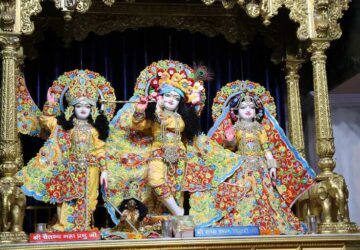
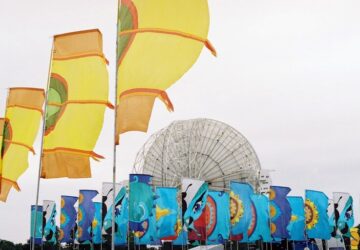

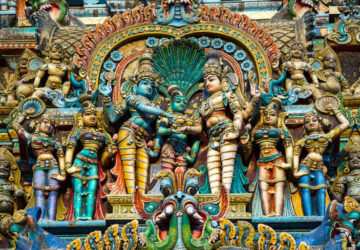
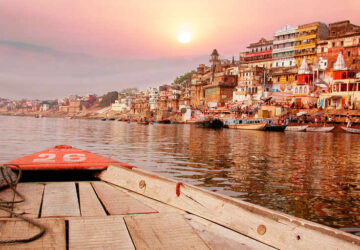
Related Post
Gardens to Visit in Dubai During Summers
From Opulent to Exotic: The 5 Best Honeymoon Destinations in 2024
Top 10 Things to Do in Ras Al Khaimah
Top 10 Things to do at Dubai Dolphinarium
Top 10 Places to Visit in Dubai
Jebel Jais and its Offerings
All You Need to Know About Dubai Cruise Tourism
10 Best Horseback Riding Tours in Dubai
Dubai Tourism - 5 Best Things to do in Hatta
5 ways to add some excitement to your travel day in Dubai Lessons from the Far East